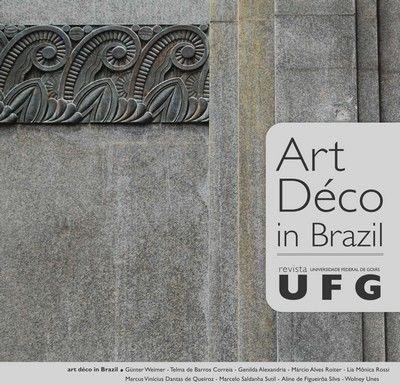Art Déco architecture in Brazil
Abstract
Nothing characterized the landscape of the majority of Brazilian towns and cities in the 1930s and 1940s more than Art Déco trends in architecture. The style then went on to establish itself as an expression of modernity which was accessible to different social classes. In larger buildings, the style became popular and spread throughout cities and towns. In architecture, Art Déco brings together both innovative aspects and links with the past. From Beaux-Arts architecture it takes its decorative aspects, expressed in a set of works characterized by the play of geometric shapes and/or façades with elements of an ornamental connotation. It also uses, and quite often at that, the BeauxArts method of composition, by adopting rules of symmetry, axiality and hierarchy in the distribution of the plan, in the organization of the façades and the arrangement of the geometric elements, expressed, among other things, in the emphasis given to the main entrance and the division of the façade into base, body and crown. It also uses simplified versions of elements of classical style, such as columns, oculi, pediments, capitals, pilasters and parapets. The innovative aspect of Art Déco lies in the frequent geometric simplification of its decorative elements and the diversification and updating of its sources of ornamental reference.Downloads
Downloads
Published
How to Cite
Issue
Section
License
Revista UFG uses the Creative Commons CC-BY (4.0) - Attribution 4.0 International license for open access journals (Open Archives Initiative - OAI) as a basis for transferring rights.
Authors who publish in this journal agree to the following terms:
1) Authors may distribute, remix, adapt and build upon their work, even for commercial purposes, as long as they give UFG proper credit for the original creation. Authors may copy and redistribute the material in any medium or format.
2) Authors are allowed and encouraged to publish and distribute their work online (e.g., in institutional repositories or on their personal page) at any point before or during the editorial process, provided that reference is made to the place of publication origin, that is, the electronic address/reference of Revista UFG.
3) The authors of works published in Revista UFG are expressly responsible for their content.
4) All works submitted to Revista UFG that have images, photographs, figures in their body must be accompanied by a term of assignment of copyright of the author, of the participating member of the image and, in the case of children, of the relatives of the exposed children , with their data and signature.
Access the IMAGE USE AUTHORIZATION TERM document here.










